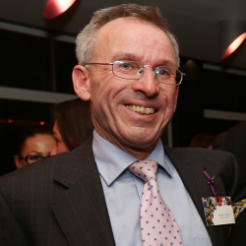Andrew Hind reflects on what it means for Charity Finance to reach such a milestone and how it all started.
This month we celebrate a major landmark, as Charity Finance is published for the 200th time.
To understand the huge contribution the magazine has made to raising professional standards in the sector, over 23 years, it’s worth remembering how and why it all began.
Nobody thought much about good governance or transparent financial reporting in the charity sector up until the mid-1980s. But three key events were about to change all that forever.
First was the Ethiopian famine of 1984 which led to Bob Geldof mobilising millions of people to support the world’s largest-ever charitable appeal. His Live Aid concert was broadcast to over 1.5 billion people in 160 countries, raising £40m.
As a result, the role of our leading charities in helping to combat human deprivation was imprinted in the minds of the general public like never before.
The second defining event, in my view, was the Guinness scandal of 1986. This brought to a head serious concerns about the ethics and propriety of the corporate world which had been bubbling under for some time. Ernest Saunders, the Guinness CEO, sought to manipulate the stock market on a massive scale, to inflate the price of Guinness shares and thereby assist a takeover bid he had made for the drinks company Distillers.
Saunders was jailed for five years, halved on appeal, for false accounting, conspiracy, and theft. Other well-known figures from the City and the business world were also heavily fined and imprisoned.
With charities having a higher profile than ever, people began to ask what there was to stop a similar control breakdown occurring in a large charity. To which the honest answer was, very little. There were no accounting standards or governance codes for charities at that time.
This was the backdrop that led to a new generation of finance leaders in the sector, led by the late Adrian Randall, forming the Charity Finance Group in 1987. The first charity Sorp was published the following year in 1988.
But how could the new ideas emerging from CFG, the professional institutes and government, about accountability and transparent reporting, be communicated across the sector as a whole?
To his eternal credit, it was Daniel Phelan who first thought about that question, and acted on it before anyone else. His answer was to launch a magazine in late 1990, which he initially called NGO Finance.
Phelan’s brainchild
23 years later we are celebrating the 200th edition of his brainchild. Phelan himself edited the magazine for its first seven years, laying down the standards for which it has become so respected: providing high-quality research, guidance and analysis on the issues which matter most to charity finance leaders. As a result, Charity Finance remains a must read publication for thousands of charity finance professionals, CEOs and trustees every month.
Along the way, Phelan also founded Fundraising and Governance magazines, and in 2000 launched the Charity Awards, to celebrate and highlight best practice across the sector.
Now in their 15th year, the Awards have honoured some of the outstanding leaders in the UK charity sector’s modern era: people such as Jill Pitkeathley, Fiona Reynolds, Su Sayer, Roger Singleton, Julia Unwin and Nicholas Young.
Phelan hasn’t spent the past quarter of a century operating on the charity frontline like them, but his distinguished contribution to the sector is every bit the equal of those illustrious names his Awards have honoured down the years.
On the occasion of Charity Finance’s 200th edition, we salute Daniel Phelan, the remarkable social entrepreneur who made it all happen.









